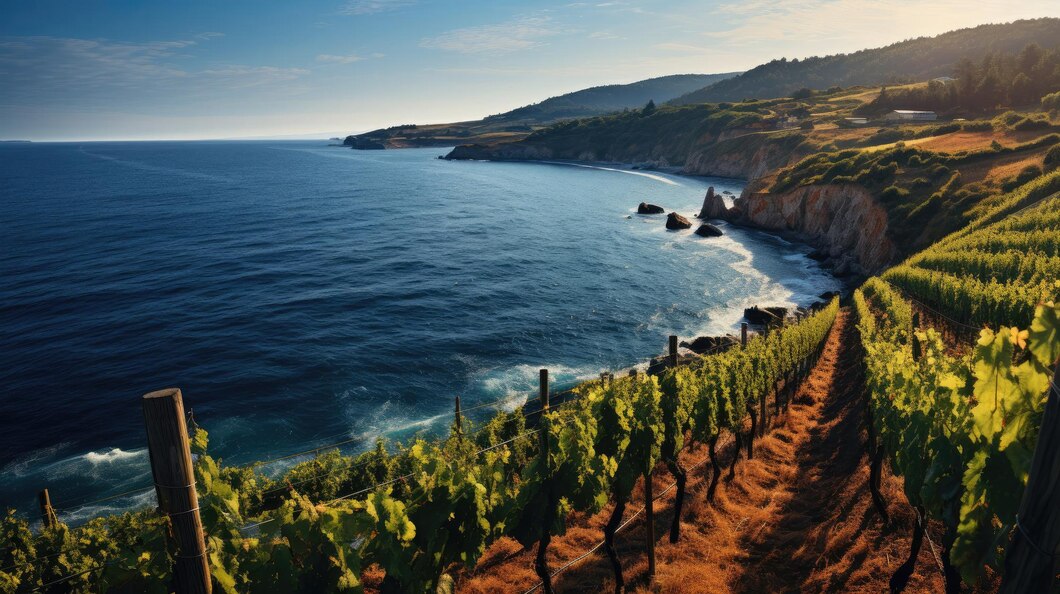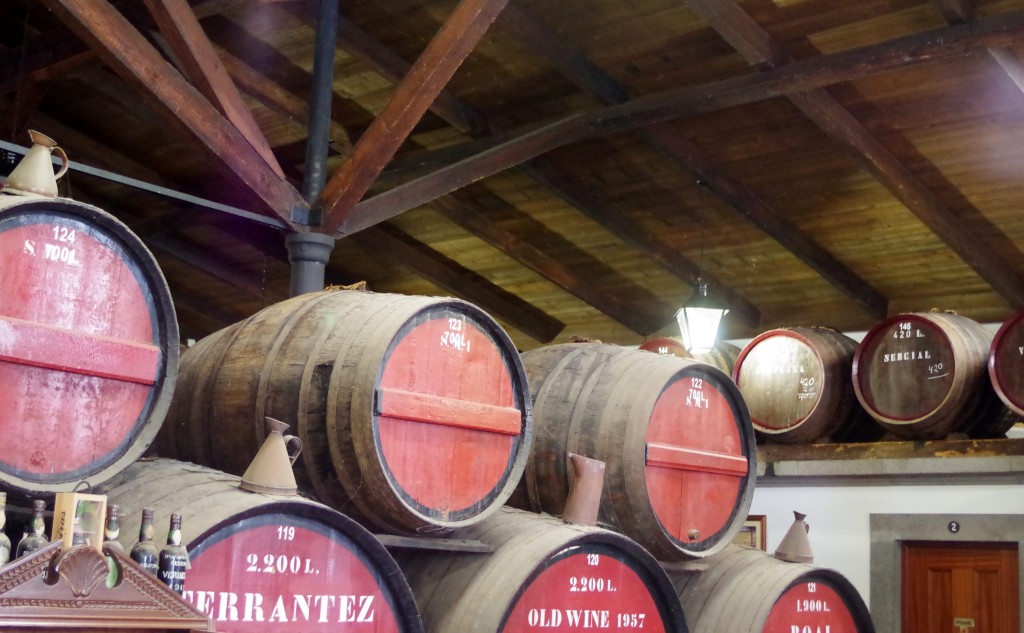Madeira Wines
Posted by Ellis Wharton Wines on 3rd Nov 2023
In a sentence, Madeira wines are fortified wines made on the Portuguese Islands of Madeira which lie in the Atlantic Ocean 700 miles off the coast of West Africa.
This blog episode will explore Madeira wines. If we have wet your whistle for more then why not join us for our Fine Madeira Tasting evening with Humberto Henriques, wine maker at Henriques and Henriques on Friday 17th November to taste a range and find out more. Tickets can be purchased HERE or instore or please call us for more details.

As Winston Churchill once said drinking an aged Madeira wine is like “drinking liquid history”! We couldn’t have put it better ourselves. We will discuss the basics of why in this blog, explore the basics of production before introducing the Madeira wines we list from Henriques and Henriques.
Madeira is a beautiful, sub-tropical Portuguese archipelago which consists of four main islands of which Madeira is the largest. Madeira is known as the “Island of eternal spring” with lush forests, stunning natural landscapes and volcanic mountains. This is an unlikely, but fantastic climate for viticulture due to the cooling influence of the Atlantic, fertile volcanic soils and powerful sunshine. The main issue for the vines of madeira is not being winter dormant due to not having a cold enough winter! Although the microclimates at higher altitude do provide cooler temperatures.

Image from https://www.freepik.com/
Madeira is a region steeped in history and tradition. Madeira’s vineyards are highly fragmented. The mountainous terrain and the fractional ownership of these vineyards with over 1000 owners owning on average 0.3h each! Harvest can be a little complicated and careful coordination is necessary. The main producers might purchase grapes from over 100 smaller producers through agents who desperately try to simplify the process.
The sub-tropical climate mentioned above, and plentiful rainfall provide vigorous vines. Rainwater which mainly falls in the centre of the island is distributed by levades (small irrigation channels) from the wet centre to drier south of the island where the vines are mostly planted.
Rainfall and powerful sunshine create a humid climate which can create the problem for vines with more fungal disease pressures. Overhead trellises are a way to manage air flow and reduce the risk and many larger producers spray to manage the fungal disease risk. In the late 19th century Powdery mildew devastated the islands vines and changed the landscape of varieties.
Grape Varieties
Several varieties are now permitted to produce Madeira. Names which we might not have explored before. The Nobel category is key and reserved for the following four varieties; Sercial, Verdelho, Boal and Malvasia, all white. A short overview on each variety below with the black variety of Madeira Tinta Negra, although not a “noble” grape.
Sercial – Known for its high acidity and used to produce the driest styles of Madeira. It is late ripening and especially in the coolest sites is the last variety to be harvested, barely above the required potential alcohol. It is resistant to powdery mildew. Plantings are small.
Verdelho – High acidity but less than Sercial this is the 2nd most planted variety on Maderia, although it is susceptible to mildew and botrytis!
Boal – umbrella term for number of varieties; from Madeira Boal Cachudo or Malvasia Fina (often found in white port). They grow best in the low altitude warm sites to the south of the island. However, Boal is susceptible to drought so needs irrigation and typically produces the semi-sweet wines.
Malvasia – another umbrella term they are most highly prised for their quality but are very susceptible to powdery mildew which limits yields considerably therefore plantings are small.
Tinta Negra – the black grape of Madeira, the most planted on the island. It is high yielding and easier to grow, permitted since 2015 to be declared on the label and produces all sweetness levels and styles of Madeira.
Madeira Wine Production
Madeira wines are fortified. The timing of the fortification is crucial for the style and sweetness of the finished wine. For sweet wines the fortification will happen earlier to preserve residual sugar. All wines must be fortified with a 96% grape spirit which is neutral in taste. The finished wines are usually between 17-18% abv.
Maturation and Maderisation
The process replicates the 17th and 18th century hot oxidative conditions that the wines were subject to when being shipped called Maderisation which imparts a dark colour and nutty character to the wines seen as faulty in most other styles of wine. Producers have two options;
Estufogem
The wines are heated in temperature-controlled steel vessels called estufas. Using a heating coil or jackets, estufas are heated to between 45 and 50 degrees and the wine must remain in for a minimum of 3 months. Officials from IVBAM will seal vessel at start and break once maturation is complete. Although sealed, the tanks are not full to the top which allows for oxidation. Wines are then filtered and left to rest. They may not be sold until the 31st of October of the second year following harvest. This process has improved significantly over recent years, but the quick process still doesn’t produce wines of the same level or complexity as the more gradual canteiro process and therefore tends to be used for 3 and 5 year old wines.
Canteiro

This process is longer and more resource intensive process and is therefore associated with higher quality wines. As pictured above the wines are matured in old oak vessels in a warm environment, either a loft or warehouse heated by the sunshine. The barrels are not filled to the top. This headspace encouraged oxidation which increases the nutty caramel and dried fruit notes in the wines and gives the dark amber colour. In the high temperatures, evaporation is high, and the wines will eventually reach 19 to 20% abv with extensive maturation in a canteiro. Evaporation also concentrates sugars, acidity and aromas. Volatile acidity also rises. Barrels need to be regularly topped up due to loss of water. These wines can’t be sold until 3 years following the harvest and once again the IVBAM must seal and unseal each vessel!
Styles of Madeira and labelling terms
There are defined labelling terms based on grape variety, levels of sweetness, length of maturation and whether single or multiple vintage wine.
Sweetness – can be labelled from “Extra Dry” to Sweet (rich) – but must be noted that even the driest of Madeira’s has some degree of sweetness so one producer “dry” might be another's “medium dry”!
Varietal Style – many premium Madeira's are varietally labelled. Each of the noble grapes is associated with the following style;
Sercial – Extra Dry or Dry. Lightest coloured and body with notes of citrus peel and nuts.
Verdelho – Medium Dry with more sugar therefore more body and texture than Sercial. Darker in colour and more candied fruit flavours than typical Sercial.
Boal – medium sweet or more sugar again. Fuller body, sweeter and darker again with flavours of chocolate, caramel and candied nuts.
Malvasia – Sweet (rich) fuller body and darker brown in colour again. Sweetest styles balanced by high acidity. Notes of raisin and caramel are common to find.
Tinta Negra – can be any sweetness level!
Madeira with an indication of age – indicator of style, not average or minimum age. May be labelled 5, 10, 15, 20, 30, 40, 50 and more than 50! Quality and price tend to increase with age. Whites over 10 years old are mostly made with the noble white varieties and matured in canteiro.
Standard blends – do not qualify for age labels specified above. They can be sold 2-3 years following harvest often with producer's brand name or simple style description eg. Henriques and Henriques Full Rich Madeira.
Rainwater – wine made in lighter style I.e alcohol, body and flavours. Usually around 18%, must be medium dry and can only be with a maximum age indicator of 1o years old. Thought to have originated when casks awaiting shipment were left open and diluted with rainwater!
Frasqueira / Garrafeira – usually the flagship of the producer's range, must be matured in wood for minimum of 20 years. Must state variety, year of harvest and year of bottling. Since 2015 Tinta Negra has been permitted to be included! These wines are complex and concentrated with sweetness balanced with high acidity.
Colheita – Vintage Madeira where grapes come from a single vintage and matured in wood for at least 5 years. Can be blended or single variety. Variety therefore doesn’t require labelling, but year of harvest and bottling must. A “new” category introduced in 2000 but is now popular due to lower maturation requirements.
Henriques and Henriques (H&H)

The Henriques family, throughout the generations, played an important role in Madeira wine making where they always stood out as producers of wines of excellent quality. However, various events which occurred in the 19th century, led the family to consolidate into a company which later, in 1925, started exporting its products. Besides being a top producer and exporter, H&H are also the only company who own private vineyards. This allows them total control of viticulture and viniculture (they also still have long established growing contracts with quality focused producers). This focus on quality is what sets H&H apart from other Madeira producers.
Learn more by watching this short video or visit their website HERE.


